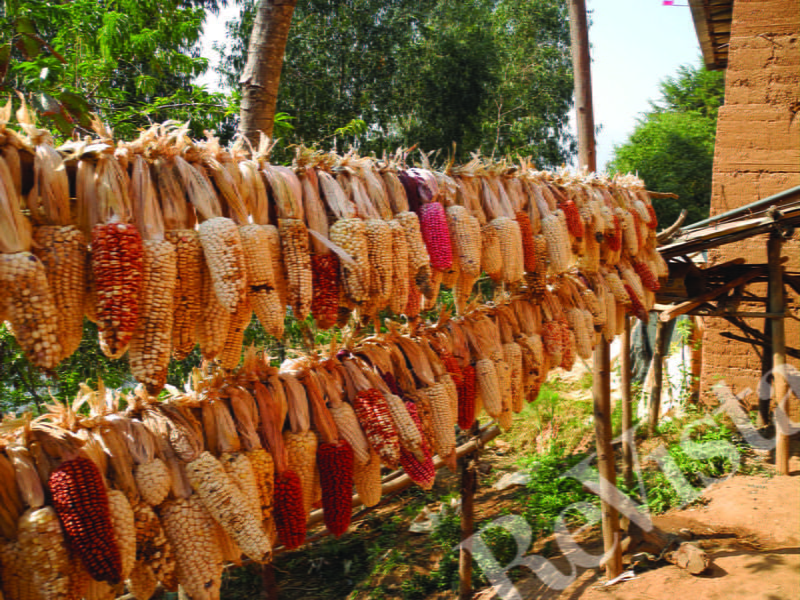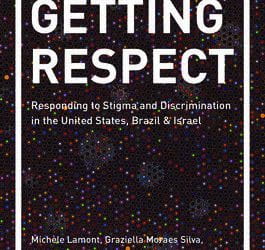A Search for Food Sovereignty
Displaced persons in post-conflict societies throughout Central and South America have been finding an unusual source of support: seed networks of food-growers who seek to strengthen agricultural projects and urban gardens.
These seed networks have operated successfully to strengthen independent food production, known as food sovereignty, in other parts of the world. For example, the 15th Garden, a Syrian-European network, supports the seed networks to provide food in war-torn Syria. The seeds can be regrown in the future, both amid the current conflict and eventually in the post-conflict phase. Food-growers then can continue to obtain the needed seeds through their own cultivation as well as personal exchanges and local markets. Displaced Syrians are also active in the 15th Garden seed networks. Rwanda, Sierra Leone, and Liberia offer other well-known examples where vigorous networks have been integral to the seeding of post-conflict landscapes.
The role of robust farmer-managed seed networks is similarly vital to Latin American countries though generally less acknowledged as an integral part of post-conflict recovery. My GeoSyntheSES lab group (http://zimmerergeosyntheses.psu.edu/) is studying and supporting these seed networks through collaborations with Bioversity International and other agencies on our field-based research projects in Nicaragua, Peru, Colombia and Mexico. Recently one of the lab’s post-docs, Steve Vanek, compiled the latest census data to gauge the share of seed coming from farmer-managed sources, referred to as the informal seed sector. In the countries where we’re working, our findings show it is robust in various post-conflict and conflict regions, with the informal seed sector supplying slightly less than one half to upwards of three-quarters of the farmers.
Smallholder farmers, those with the most restricted land areas in each country, are the most reliant on the informal seed sector. According to our new estimates, more than 90 percent of this land-poor group today depends on the use of informally sourced seed. Region-wide, the smallholder population numbers as many as 50 million families in Latin America and includes many indigenous and peasant families. Given its widespread importance, how has the informal seed sector operated in post-conflict contexts in Latin America as well as amid active political and military violence?
Nicaragua and Peru offer useful illustrations of the post-conflict seeding of fields and gardens. Seeds have played a pivotal role in the winding path of agrarian development and recent changes following the Nicaraguan peace accords in the early 1990s. The country’s informal seed system, which is estimated to supply 83 percent of food-growers, has been reinvigorated through the strong cooperative and fair trade movements. Farmer-managed seed and food sovereignty are also part of Nicaragua’s current goal of social inclusion in sustainable agrarian development. The accessibility of its informal seed sector is integral to programs supporting poorer women smallholders who farm in marginal growing sites across rural and urban fringe areas.
The seeding of post-conflict landscapes in Peru began amid the weakening Shining Path insurgency in the mid- and late 1990s. During its early stage immediately after 1980, the Shining Path insurgency is said to have been sympathetic to the needs of poor peasant and indigenous farmers in the countryside. Within a few years, however, the heightened conflicts of these farmers with the increasingly violent insurgents and the abuses of Peru’s government security forces led to a precipitous and protracted agrarian decline.
At least 250,000 persons were displaced from their homes in Peru, many of them farmers. The majority relocated to the shantytowns of major cities in the Andes and on the Pacific coast, with some eventually returning to rural areas and villages. Food-growers procured new seed in various ways. The informal sector (currently estimated at almost half of all Peruvian farmers) figured prominently amongst the seed sources for the displaced populations. The sources were both local as well as long-distance since procurement through social networks and local markets can take place at distances of 30 to 60 miles or more from the recipients’ homes. The seeding of post-conflict landscapes occurred also in Peru’s shantytowns, since small fields and gardens abound in these extensive urban fringes.
Colombia offers one of the largest prospects for seeding post-conflict landscapes in Latin America. Many of the nearly seven million persons displaced by violence in Colombia are from rural and peri-urban areas where food-growing was a prominent activity. The most extensive mass displacement events that occurred in 2014 were located in such places in Nariño (Tumaco), Valle del Cauca, Cauca, Norte de Santander and Chocó. A majority of these displaced persons in Colombia undertake some food-growing and would like to be able to expand and make more consistent these activities. To do so will rely heavily on seed from local markets and their social networks.
The informal seed sector is already active in Colombia in sites of displacement distinguished by the weaker presence of civil society, government institutions and infrastructure. International and national non-profit organizations, such as the Red de Semillas Libres (Network of Free Seeds), are seeking to address the burgeoning need for locally available, affordable, and well-suited seeds for food-growing. They anticipate this need will increase severalfold in Colombia if poorer citizens are to be successful in returning to their lands following potential peace accords. Such efforts also underscore the hotly contested question of the future viability of Colombia’s still dynamic informal seed sector that is currently used countrywide by 54 percent of all farmers. Proponents worry how well it will fare amid unfolding new trade legislation and land grabs. Seed aid experts such as Shawn McGuire at the UN’s Food and Agriculture Organization also point out that poorly designed post-conflict agricultural assistance can actually weaken the existing informal, farmer-managed systems.
The informal seed sector of Mexico is estimated to serve 45 percent of the country’s farmers. This percentage underscores its dynamism in the country’s current conflict landscapes that are being assessed by GeoSyntheSES lab member Gabriel Tamariz. Poorer persons in central and western Mexico rely heavily on these local seed sources, as the previous infrastructure in rural areas and in small towns and cities has eroded as a consequence of violence.
Resilience of the informal seed sector has served as a much-needed resource to Mexico’s small-scale food-growers. It was already crucial in the 1990s when international trade agreements resulted in economic shocks across the Mexican countryside and to the agricultural sector in particular. Flooding of the international and national markets with inexpensive maize led many smallholders to concentrate on local markets, a process that has been termed re-localization.
Migration from small towns and villages throughout Mexico has reinforced this re-localization strategy. Additional income helps to enable continued small-scale farming and local seed use. At the same time, the role of local seed has also been elevated in other ways. The Zapatista movement strongly backs the saving and exchange of seed in Chiapas landscapes as part of everyday food sovereignty practices.
“I have great faith in a seed. Convince me that you have a seed there, and I am prepared to expect wonders,” wrote Henry David Thoreau in his essay “The Dispersions of Seeds.” Good-quality, accessible, farmer-managed seed is needed to strengthen food-producing capacity and civil society in post-conflict landscapes as well as in spaces of ongoing conflicts. These seeds are well-matched to the portfolio of existing foodways and livelihood capacities, and they contribute to the regeneration of the biodiversity of crops.
The vibrancy of local seed systems, powerful food preferences and agrobiodiversity resilience raise hopes about the chance of strengthening food supplies during periods of turbulent conflicts and improving food sovereignty in post-conflict landscapes. Nor are these hopes confined to local communities or even to national boundaries. International networks and institutions are vitally important, both in promoting farmer-managed seed and in addressing conflict and post-conflict situations.
As Thoreau noted, convincing is needed about the viability of seed. Seed aid can provide a stop-gap measure under dire circumstances, but on the heels of this immediate relief should come the strengthening of the informal seed sector. Farmer seed networks and local seed markets need to be recognized as pillars of food-growing whether amid persistent conflicts or post-conflict development. They require supportive policies and programs such as seed vouchers, fairs for exchanges, and scientific and technical collaborations. The seeding of post-conflict landscapes is integral to the social and ecological sustainability of both food-growing and human rights in these geographic spaces.
Winter 2017, Volume XVI, Number 2
Karl Zimmerer, the 2016 DRCLAS Custer Visiting Scholar, is a professor in the department of geography at Pennsylvania State University, where he also directs the GEOSyntheSES lab. Zimmerer’s seventh book (with Stef de Haan) is Agrobiodiversity in the 21st Century: Foundations and Integration for Sustainability (MIT Press) to be released in 2017. He co-chairs the international scientific forum on agrobiodiversity science and sustainable agri-food systems. His new findings are published as recent and forthcoming articles across a wide variety of scientific and scholarly journals. He thanks DRCLAS and Tony Custer for their support.
Related Articles
Colombia’s Other Displacements
Of course, I knew about Colombia’s sad statistics on displacement, with the highest numbers in Latin America and vying with those of war-torn countries like Sudan and…
Getting Respect
When I first arrived in Brazil in the 1980s, I quickly learned that race in Brazil was not important there. The country that once had by far the largest slave population in the…
Ana Tijoux’s Radical Crossing of Borders
This summer, I was an intern in Santiago’s Museum of Memory and Human Rights, the museum dedicated to the victims of Pinochet’s dictatorship. Since I was in Chile…





